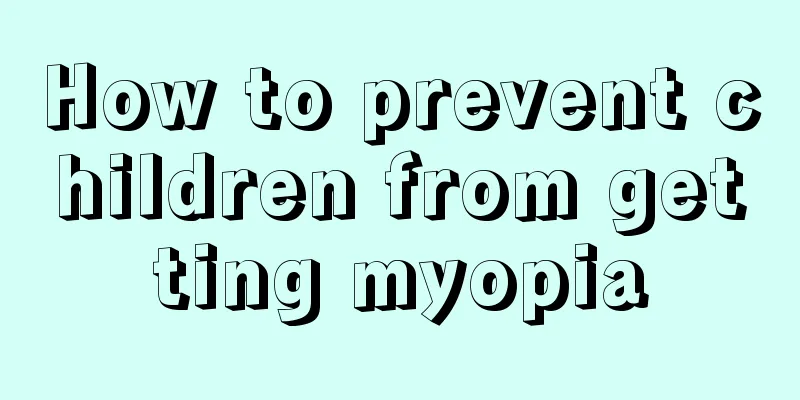What should I do if my child has a high fever of 40 degrees?

|
Generally in summer, children often have fever symptoms, and it is difficult to reduce the fever, so this may be related to some diseases, but sometimes improper fever reduction methods are also one of the factors, so what should we do? The correct way to reduce fever: There are two methods of reducing fever: one is drug-based cooling, which is letting children take antipyretics to reduce fever; the other is physical cooling, such as bathing, alcohol bath, cold compress, etc. If the child's temperature is below 38.5 degrees, we generally do not recommend overly aggressive cooling treatment. You can let the child drink more water and move more, and sometimes the temperature will drop. If the child's temperature reaches or exceeds 38.5 degrees, it is recommended to give antipyretic treatment. The most important, accurate and direct way is to give antipyretics such as Tylenol, Motrin and other drugs, supplemented by physical cooling methods. The two antipyretics can be used alternately (but not necessarily), especially when the body temperature remains high and one antipyretic does not control the body temperature ideally. If the body temperature is over 38 degrees but less than 38.5 degrees, it depends on the child's own condition. For example, if there is a history of high fever convulsions, or if the child's temperature is found to be rising rapidly (the temperature changes of the child each time may be very different due to different pathogens), even if it is less than 38.5 degrees, the child should take antipyretics. Bathing is a recommended physical cooling method. Children like this method, it is easy for parents to operate, and the cooling effect is also ideal. It can be used when antipyretics are not effective in lowering the body temperature or when the body temperature rises quickly after falling, but the time interval is less than the interval between two doses of medicine. At this time, bathing can be used as a cooling method. The bathing room should maintain an appropriate temperature, not too cold. Close the doors and windows before taking a bath, and ensure the room temperature and water temperature are at the normal bathing temperature. The bath can last for 15-20 minutes, and the body temperature will generally drop by 1-2 degrees. After the bath, dry the child's hair and skin all over the body before opening the doors and windows. This method goes against traditional concepts, but it is a very good and easy-to-operate cooling method that is worth learning for parents. Alcohol baths can also effectively reduce fever, but if used correctly, they will cause the child to cry severely (rubbing the chest and back with alcohol is the wrong way to do it), making it difficult for parents to do so, so it is not recommended for parents. Ice patches and cold compresses are auxiliary cooling methods and can be used, but the effects are not great. Applying ice patches to children is, in a sense, comforting the mother. |
<<: Children's allergic cough medication, these things to remember
>>: Should I get the hand, foot and mouth disease vaccine? This is what the experts say
Recommend
Can two single eyelids give birth to double eyelids?
We all know that eyelids can be single or double....
10 characteristics of children with low IQ, these abnormal manifestations
Nowadays, many children have intellectual disabil...
What should I do if my child is introverted?
Parents all hope that their children are lively a...
Is it normal for a child to have a vision of 0.8?
Myopia is a very common problem. Nowadays, the nu...
Is it normal for a baby to start teething at 4 months old?
We know that babies usually grow teeth at 6 month...
White spots on the child's skin
Children with fair skin are very attractive. Many...
Dietary taboos for children with asthma
Asthma is a relatively common disease. It is a ch...
What to do if a girl has rhinitis
According to investigation, rhinitis is the chron...
What should I do if my baby has a bad stomach?
One of the things parents care about most is the ...
Do children with bronchitis need medication?
Childhood bronchitis is a common respiratory dise...
Solution for three-month-old baby who doesn't like to drink water
In the hot summer, if the baby does not like to d...
Baby diarrhea
Children's bodies are relatively fragile, so ...
What should children pay attention to after tooth extraction?
Tooth extraction is a common method of treating d...
Is moderate anemia serious in children?
Anemia often occurs in some women in life. After ...
What is the most effective food for children with phlegm?
It is a common phenomenon for children to have ph...









